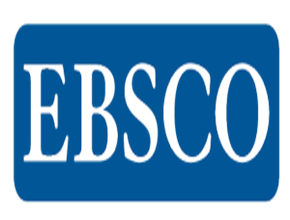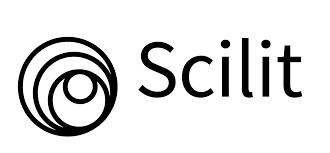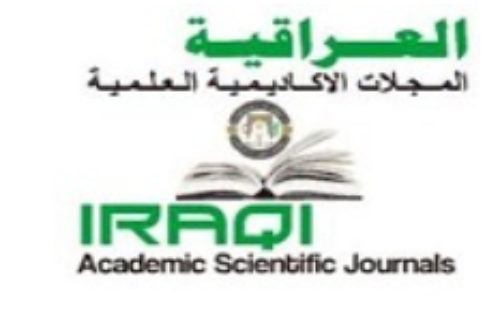Enhancing and utilizing the Production of Keratinase Enzymes from Bacillus amyloliquefaciens for the Recycling of Feather Waste
DOI:
https://doi.org/10.32792/utq/utjsci/v12i1.1386Keywords:
Feather meal, , Keratinolytic bacteria, , keratinase activity, , Optimal conditions, , Bacillus amyloliquefaciens.Abstract
The use of the microbial keratinase enzyme to remediate keratinous waste is an attractive approach in green processing and biotechnology, aiming to eliminate waste accumulation in the environment and recycle it into economical or nutritional products. This study aims to enhance the environmental and nutritional conditions of the growth medium for a keratinolytic bacterium isolated from the soil of a poultry farm in Basrah Province, Iraq, to increase its keratinase production. Subsequently, the keratinase will be used to convert feathers into a poultry feed supplement (feather meal). In the present study, the bacterial isolate was identified as Bacillus amyloliquefaciens strain 19E2. The optimal conditions for keratinase enzyme production were determined by evaluating various factors, including temperature, pH, carbon sources, nitrogen sources, and inoculum size. The keratinase activity before optimizing the environmental and nutritional conditions was measured at 42.1 U, after applying the best at 37°C, pH 8, tryptone as the preferred nitrogen source, glucose as the preferred carbon source, and an inoculum size of 1 ml during a 48-hour incubation period, the keratinase activity increased to 129.3 U. This Bacillus amyloliquefaciens strain 19E2 was then utilized to convert 25 g of feathers into 8 g of feather meal, which was tested by FTIR and found to be a rich source of amino acids and short peptides for use as a nutritional supplement.
Received: 2025-04-29
Revised: 2025-06-07
Accepted: 2025-06-28
References
[1] A. J. Mohammad and N. A. Alyousif, " Short Communication: Molecular identification and assessment of bacterial contamination of frozen local and imported meat and chicken in Basrah, Iraq using 16S rDNA gene "Biodiversitas, vol. 23, no. 3, pp. 1598-1604, 2022.
[2] B. Srivastava, M. Khatri, G. Singh, and S. K. Arya, "Microbial keratinases: an overview of biochemical characterization and its eco-friendly approach for industrial applications". Journal of Cleaner Production, vol. 252, no. 119847, 2020.
[3] M. M. F. Santos, C. V. B. Grisi, M. S. Madruga and F. A. P. Silva, "Nutritional and technological potential of chicken feathers for the food industry" British Poultry Science, vol. 65, no. 6, pp. 722-729, 2024.
[4] J. Qiu, C. Wilkens, K. Barrett, and A. S. Meyer, "Microbial enzymes catalyzing keratin degradation: Classification, structure, function" Biotechnology Advances, vol. 44, no.107607, 2020. https://doi.org/10.1016/j.biotechadv.2020.107607.
[5] M. Talha, M. Tanveer, A. Abid, A. A. Maan, M. K. I. Khan, H. Shair, T. Nimra and Mustafa, A. "Valorization of poultry slaughter wastes via extraction of three structural proteins (gelatin, collagen and keratin): A sustainable approach for circular economy" Trends in Food Science and Technology, vol. 152, 104667, 2024.
https://doi.org/10.1016/j.tifs.2024.104667
[6] K. Tamreihao, S. Mukherjee, R. Khunjamayum, L. J. Devi, R. S. Asem, and D. S. Ningthoujam, "Feather degradation by keratinolytic bacteria and biofertilizing potential for sustainable agricultural production" Journal Basic Microbiolology, vol. 59, no. 1, pp. 4-13, 2019. DOI: 10.1002/jobm.201800434.
[7] D. Kang, J. Herschend, Al W. A. Soud, M. S. Mortensen, M. Gonzalo, S. Jacquiod, and S. J. Sørensen, "Enrichment and characterization of an environmental microbial consortium displaying efficient keratinolytic activity" Bioresource Technology, vol. 270, pp. 303-310, 2018. https://doi.org/10.1016/j.biortech.2018.09.006
[8] E. D. O. Carolina, J. Mulinari, A. C. de Meneses, D. D. Magro, M. Paliga, G. Zin and O. J. Vladimir, "Enzymatic hydrolysis of proteins derived from co-and by-products of the meat industry: a review" European Food Research and Technology, PP.1-12, 2025.
[9] E. Tiwary, and R. Gupta, "Rapid conversion of chicken feather to feather meal using dimeric keratinase from Bacillus licheniformis ER-15" Journal of Bioprocessing and Biotechniques, vol. 2, no. 4, pp. 1000123, 2012. DOI: 10.4172/2155-9821.1000123.
[10] M. Dada, and S. Wakil, "Conversion of feather to potential feed supplement using keratinase from Bacillus licheniformis-K51" Journal of Applied Sciences and Environmental Sustainability, vol. 13, no. 7, pp. 10-31, 2021.
[11] N. M. A. Al-Amery, and N. A. Alyousif, "Isolation, screening, and molecular characterization using 16S rDNA gene of feather-degrading bacteria isolated from poultry soil in Basrah Province, Iraq" Biodiversitas, vol. 25, no. 9, pp. 3217-3226, 2024. DOI: 10.13057/biodiv/d250944
[12] S. Tork, M. M. Aly, and L. Nawar, "Biochemical and molecular characterization of a new local keratinase producing Pseudomonas sp., MS21" Asian Journal of Biotechnology, vol. 2, no. 1, pp. 1-13, 2010. DOI: 10.3923/ajbkr.2010.1.13
[13] N. C. Barman, F. T. Zohora, K. C. Das, M. G. Mowla, N. A. Banu, M. Salimullah, and A. Hashem, "Production, partial optimization and characterization of keratinase enzyme by Arthrobacter sp. NFH5 isolated from soil samples" AMB Express, vol. 7, no. 1, pp.181, 2017.https://doi.org/10.1186/s13568-017-0462-6.
[14] M. Akhter, L. Wal Marzan, Y. Akter, and K. Shimizu, "Microbial bioremediation of feather waste for keratinase production: an outstanding solution for leather dehairing in tanneries" Microbiology insights, vol. 13, pp. 1-12, 2020. https://doi.org/10.1177/1178636120913280.
[15] A. A. Onifade, N. A. Al-Sane, A. A. Al-Musallam, and S. Al-Zarban, "A review: potentials for biotechnological applications of keratin-degrading microorganisms and their enzymes for nutritional improvement of feathers and other keratins as livestock feed resources" Bioresource Technology, vol. 66, no. 1, pp.1-11, 1998. https://doi.org/10.1016/S0960-8524(98)00033-9.
[16] S. Alahyaribeik, S. D. Sharifi, F. Tabandeh, S. Honarbakhsh, and S. Ghazanfari, "Bioconversion of chicken feather wastes by keratinolytic bacteria" Process Safety and Environmental Protection, vol. 135, pp. 171-178, 2020. https://doi.org/10.1016/j.psep.2020.01.014
[17] H. Mukhtar, M. Ahmad, and Y. Arshad, "Isolation and screening of keratinase producing bacteria from soil" Biologia Pakistan, vol. 65, pp. 1-6, 2019.
[18] A. B. Friedrich, and G. Antranikian, "Keratin degradation by Fervidobacterium pennavorans, a novel thermophilic anaerobic species of the order Thermotogales" Applied and Environmental Microbiology., vol. 62, no. 8 pp. 2875-2882, 1996. doi: 10.1128/aem.62.8.2875-2882.1996.
[19] M. Kurzyna-Szklarek, J. Cybulska, and A. Zdunek, "Analysis of the chemical composition of natural carbohydrates an overview of methods" Food Chemistry, vol. 394, no. 133466, 2022. doi.org/10.1016/j.foodchem.2022. 133466
[20] M. Kumar, D. Bhatia, S. Khatak, R. Kumar, A. Sharma, and D. K. Malik, "Optimization and purification of keratinase from Bacillus anthracis with dehairing application" Journal of Pure Applied and Microbiology, vol. 13, no. 1, pp. 585-590, 2019. DOI: 10.22207/JPAM.13.1.67.
[21] V. Uttangi and K. Aruna, "Optimization of production and partial characterization of keratinase produced by Bacillus thuringiensis strain Bt407 isolated from poultry soil" International Journal of Current Microbiology and Applied Sciences, vol. 7, no. 4 pp. 596-626, 2018. DOI: https://doi.org/10.20546/ijcmas.2018.704.069.
[22] H. G. M. Edwards, D. E. Hunt, and M. G. Sibley, "FT-Raman spectroscopic study of keratotic materials: horn, hoof and tortoiseshell" Spectrochimica Acta Part A: Molecular and Biomolecular Spectroscopy, vol. 54, no. 5, pp. 745-757, 1998. https://doi.org/10.1016/S1386-1425(98)00013-4.
[23] N. Eslahi, F. Dadashian, and N. H. Nejad, "An investigation on keratin extraction from wool and feather waste by enzymatic hydrolysis" Preparative Biochemistry and Biotechnology, vol. 43, no. 7, pp. 624-648, 2013. https://doi.org/10.1080/10826068.2013.763826.
[24] A. Aluigi, M. Zoccola, C. Vineis, C. Tonin, F. Ferrero, and M. Canetti, "Study on the structure and properties of wool keratin regenerated from formic acid" International Journal of Biological Macromolecules, vol. 41, no. 3 pp.266-273, 2007. https://doi.org/10.1016/j.ijbiomac.2007.03.002.
[25] A. Vasconcelos, G. Freddi, and A. Cavaco-Paulo, "Biodegradable materials based on silk fibroin and keratin" Biomacromolecules, vol. 9, no. 4, pp. 1299-1305, 2008. doi: 10.1021/bm7012789.
[26] D. Morganti, V. Longo, A. A. Leonardi, A. Irrera, P. Colombo and B. Fazio, "First Vibrational Fingerprint of Parietaria judaica Protein via Surface-Enhanced Raman Spectroscopy" Biosensors, vol. 15, no. 3, pp.182, 2025.
[27] A. Idris, R. Vijayaraghavan, U. A. Rana, D. Fredericks, A. F. Patti, and D. R. Macfarlane, "Dissolution of feather keratin in ionic liquids" Green Chemistry, vol. 15 no. 2, pp.525- 534, 2013. doi.org/10.1039/C2GC36556A.
[28] J. Zhang, Y. Li, J. Li, Z. Zhao, X. Liu, Z. Li, Y. Han, J. Hu, and A. Chen, "Isolation and characterization of biofunctional keratin particles extracted from wool wastes" Powder Technology, vol.246, pp. 356-362, 2013. https://doi.org/10.1016/j.powtec.2013.05.037.
[29] V. Zebhi-Ashkezari, and M. H. Fazaelipoor, "Chicken feather dissolution to obtain keratin", Discover Chemistry, vol. 2, no. 100, 2025. https://doi.org/10.1007/s44371-025-00169-0
[30] C. Isembart, B. Zimmermann, J. Matić, C. Bolaño Losada, N. K. Afseth, A. Kohler, H. J. Svein, E. Vincent, C. Piotr, V. Shapaval, "Comparative analysis of pre-treatment strategies and bacterial strain efficiency for improvement of feather hydrolysis" Microbial Cell Factories, vol.24, no.1, pp. 1-17, 2025.
[31] M. Chellapackialakshmi and C. Ravi, "Pre-treatment of chicken feather for enhancing the keratinolytic potential of bacteria isolated from feather dumping sites" Biomass Conversion and Biorefinery, vol. 2024, pp. 1-16, 2024. https://doi.org/10.1007/s13399-024-06439-8
Downloads
Published
License
Copyright (c) 2025 University of Thi-Qar Journal of Science

This work is licensed under a Creative Commons Attribution 4.0 International License.












